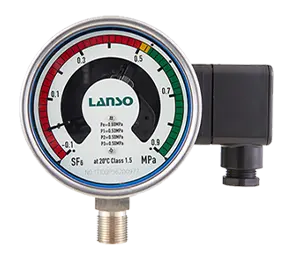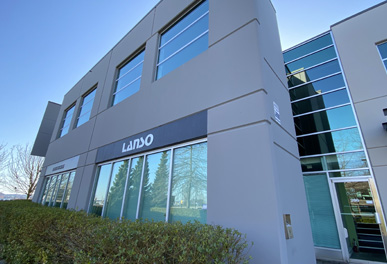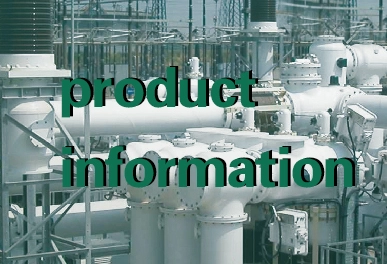SF6 gas density meter shows the density of SF6 gas in the gas chamber of electrical equipment, which is expressed as the pressure of SF6 gas after temperature compensation, i.e. as the pressure value at 20°C. The relay works at the rated pressure. When the ambient temperature changes, the pressure of SF6 gas also changes. The internal measuring system of the relay takes the temperature into account while measuring the pressure, i.e. the internal temperature compensation unit automatically compensates for its changed pressure so that its rated pressure indication remains unchanged. When the SF6 gas leaks for some reason, the pressure drops after temperature compensation, and when it reaches the alarm pressure value, the relay outputs a pair of contacts (alarm signal), which then requires the user to replenish the equipment, and if the pressure continues to drop to the latching action pressure value, the relay outputs another pair of contacts (latching signal) to latch the corresponding control system of the equipment, thus To achieve the safe operation of the electrical equipment protection. Equipment in the SF6 gas filling, when too much exceeds the rated value, some density relays can also issue an overpressure alarm signal.
1. Density meter and the ambient temperature and gas temperature special relationship
The ambient temperature where the density meter is located and the temperature of SF6 gas in the body of the equipment should be consistent in order to accurately reflect the gas density. If the ambient temperature of the density meter is higher than the temperature of SF6 gas in the body of the equipment, the density meter will be low and vice versa. Gas temperature rises steeply, if the temperature at the densitometer rises synchronously, the indication value remains unchanged; conversely, if the temperature at the densitometer does not rise synchronously, the reading becomes larger.
2. The relationship between the densitometer reading and altitude
For the absolute pressure type of densitometer, in the inflatable operation, the reading has nothing to do with the altitude, only in the absence of gas, zero position and altitude, high altitude, the reading is small, and vice versa, the reading is large. For the relative pressure type gas density gauge, after the inflation operation, the reading is related to the altitude, where the altitude is high, the reading is large, and vice versa the reading is small. And in the absence of gas, its zero position has nothing to do with altitude. In addition, the alarm, blocking value can not be set with the use of the environment and place, well done can not be adjusted.
3. The density meter non-working state of the zero problem
When the density relay is installed in the SF6 gas-filled equipment work, it is in an equal working condition. At this time, the density relay measurement system is felt within the equipment gas chamber SF6 densitometer gas pressure, the pressure changes with the gas temperature changes, the gas temperature increases when the pressure increases, the gas temperature decreases when the pressure decreases. At this time, the temperature compensation element also according to the change of ambient temperature compensation, the ambient temperature rises when the instrument's indicated value decreases, the ambient temperature decreases when the instrument's indicated value increases. The compensation amount of the temperature compensation element is equal in size and opposite in direction to the influence of the temperature-induced gas pressure change on the instrument value, so that the instrument value is only related to the gas density, but not to the temperature-induced gas pressure change. When the density relay is in a non-working state (when not inflated), the density relay measurement system is feeling the atmospheric pressure, the pressure does not change with the temperature, then the separate role of the temperature compensation element makes in the ambient temperature is higher than the compensation reference temperature (20 ℃), the pointer of the density relay points to below zero; and the ambient temperature is lower than the compensation reference temperature (20 ℃), the density relay pointer is above zero. The specific deviation from the zero level is related to the temperature.







